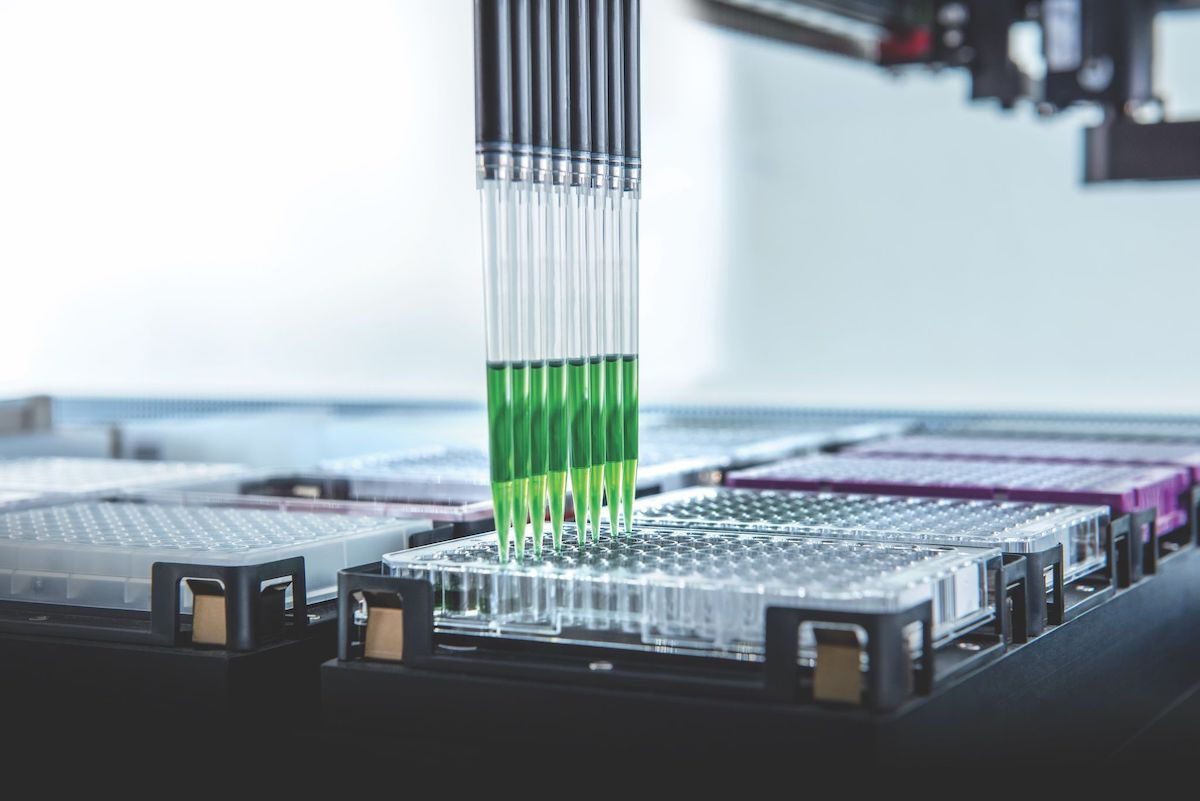Tips for Using Pipettors
Apr 29, 2022
A pipettor is a tool for quantitatively transferring liquids, and is widely used in biology, chemistry and other fields.
1. Use skills
There are some tricks in the operation of pipettors. How to select the volume and control the imbibition is a common problem that bugs inexperienced operators. The following is a list of important notes for pipettors.
Installing the pipette tip for the pipettor
After the bottom end of the handle of the pipettors enters the tip, if you operate in the tip box, shake the pipettors left and right while pressing down gently or turn the pipettors slightly for 1 to 2 seconds. if a loose-packed tip is used, turn the pipette tip slightly for 1 to 2 seconds while gently applying pressure to the pipette by hand. If this operation does not achieve the desired tightness, the pipette tip and pipettor need to be checked.
The volume of pipettors in the laboratory
In general, the usable range of the pipettor is 10% to 100% of the maximum range of the pipettor. The best suggestion is that the optimal range of the pipettor is 35% to 100% of the maximum range of the pipettor based on operating experience.
Controlling the imbibition speed of the pipettor
In the absorbing process of the pipettor, the downward pressure of the thumb must be slowly lowered to make the liquid rise evenly and slowly in the pipette tip.
The depth and angle of absorption of pipettors in the laboratory
1. Use skills
There are some tricks in the operation of pipettors. How to select the volume and control the imbibition is a common problem that bugs inexperienced operators. The following is a list of important notes for pipettors.
Installing the pipette tip for the pipettor
After the bottom end of the handle of the pipettors enters the tip, if you operate in the tip box, shake the pipettors left and right while pressing down gently or turn the pipettors slightly for 1 to 2 seconds. if a loose-packed tip is used, turn the pipette tip slightly for 1 to 2 seconds while gently applying pressure to the pipette by hand. If this operation does not achieve the desired tightness, the pipette tip and pipettor need to be checked.
The volume of pipettors in the laboratory
In general, the usable range of the pipettor is 10% to 100% of the maximum range of the pipettor. The best suggestion is that the optimal range of the pipettor is 35% to 100% of the maximum range of the pipettor based on operating experience.
Controlling the imbibition speed of the pipettor
In the absorbing process of the pipettor, the downward pressure of the thumb must be slowly lowered to make the liquid rise evenly and slowly in the pipette tip.
The depth and angle of absorption of pipettors in the laboratory
- Requirements for the immersion depth of the pipette tip of the pipettor: the depth of suction must reach the required pipette tip volume; keep the outer wall of the pipette tip from contacting the liquid as little as possible.
- The pipetting angle of the pipettor: in the pipetting process, the pipettor must be kept in a vertical state.
The dwell time of the pipettor
For a large amount of pipetting and pipetting with a viscosity significantly higher than that of water samples, the pipette tip must stay in the liquid for 3 to 5 seconds before it can be removed after releasing the thumb.
Storing the pipettor in the laboratory
After the pipettor is used, it must be adjusted to the maximum volume, and then hung. It can be hung on a special bracket, or the metal cross bar of the laboratory cabinet.
2. Three kinds of mistakes made in pipettors and their corrections
As the most commonly used manual adjustable precision pipettor for handling liquids, some misoperation will bring errors, which will cause damage to the tool. The following mistakes should be paid attention to:
Error one: When assembling the pipette tip, repeatedly hit it with the pipettor to tighten it.
Correction: Insert the pipette tip, and turn left and right to tighten it.
Reasons: The impact will cause the looseness of the internal gear combination of the pipettor, which will affect the accuracy of the pipettor after operating for a long time.
Error two: The pipette tip does not match the pipettor, which affects the air tightness.
Correction: Choose a pipette tip with good quality that matches the pipettor.
Reasons: The mismatch of the pipette tip mainly has an influence on the air tightness, which will directly affect the accuracy of the pipettor. Usually, the pipetting amount will be less than the set volume.
Error three: When absorbing, the pipettor is tilted to absorb the liquid.
Correction: The pipettor should absorb the liquid vertically.
Reasons: The inclined state will cause a change in the air pressure surface, which will affect the pipetting accuracy.
Previous: 2022 Exhibition Information
Next: Influencing Factors of Fogging of Medical Goggles


